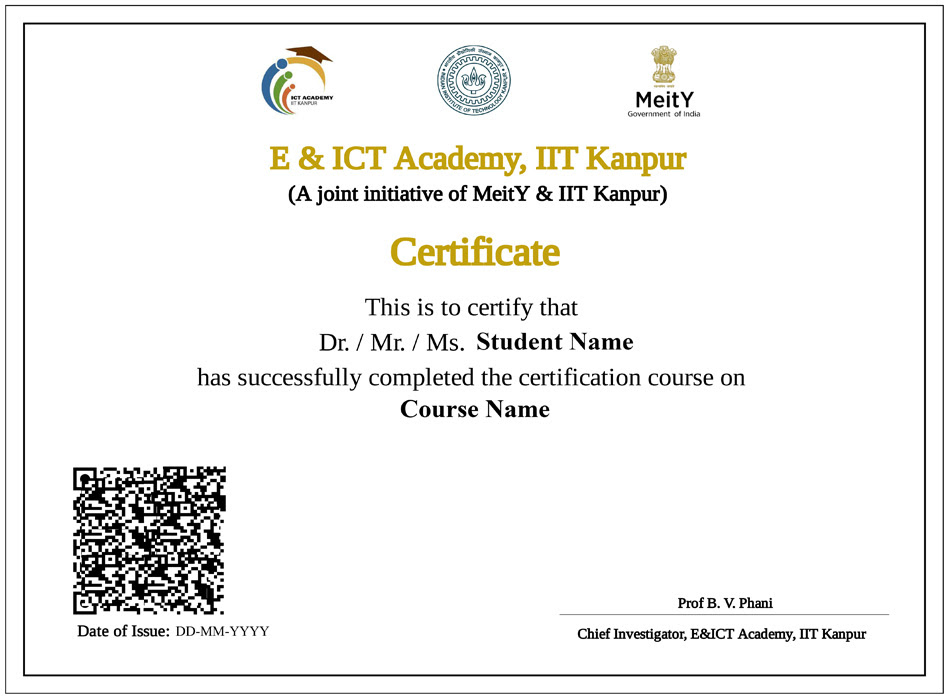Machine Learning
Master Machine Learning Algorithms and Real-World Applications
- Certificate of Completion and Project Letter from E&ICT Academy, IIT Kanpur upon course completion.
- 120 hours of comprehensive training: 60 hours of live online sessions and 60 hours of assignments.
- Hands-on experience with real-world machine learning projects and applications.
Beginner Level
Online Live
1 Month
What you'll learn
- Fundamentals of machine learning, including supervised and unsupervised learning algorithms.
- Implementation of algorithms such as linear regression, logistic regression, decision trees, random forests, SVMs, k-NN, and K-means clustering.
- Model evaluation techniques and hyperparameter tuning to enhance model performance.
- Feature engineering and dimensionality reduction techniques, including PCA.
- Understanding the societal impact, ethics, and future trends of machine learning.
Skills you'll gain
Tools




Earn a career certificate
Add this credential to your LinkedIn profile, resume, or CV. Share it on social media and in your performance review.

Learn from Industry Experts
Gain insights from seasoned professionals with real-world experience in machine learning and AI.
Hands-On, Project-Based Learning
Apply concepts through practical exercises and a capstone project to build real-world machine learning applications.
Flexible, Live Online Sessions
Engage in live instructor-led sessions designed for interactive learning and immediate feedback.


